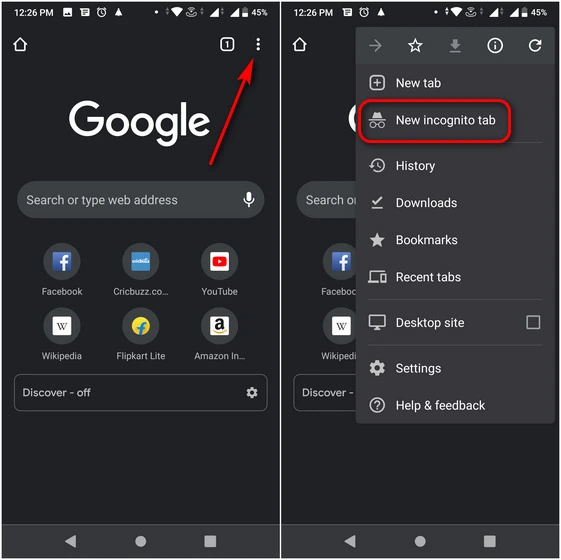Like most people, you probably use Incognito Mode on your Android device to browse the web anonymously. But did you know that Incognito Mode can be disabled?
That’s right! This blog post will show you how to disable Incognito Mode on your Android device. So if you’re ready to stop being anonymous, read on!
How Can I Disable Incognito Mode on My Android Phone?
If you want to disable incognito mode on your Android phone, there are a few ways you can go about it. You can either turn off incognito mode in your browser’s settings or install an app that will disable incognito mode for you. Doing it on Android devices is relatively easy. Doing it on a PC or Mac is a different process.
If you want to disable incognito mode in your browser’s settings, you can go to the “Privacy” or “Security” settings in your browser. Once there, look for the option to turn off incognito mode. This option will vary depending on your browser, but it should be relatively easy to find.
If you want to install an app that will disable incognito mode for you, there are a few options available. One option is Incognito Mode Off, which is free from the Google Play Store. Another option is Private Browsing Off, which is also available for free from the Google Play Store.
Once you’ve installed one of these apps, simply launch it and follow the instructions to disable incognito mode on your Android phone.
Why do people use incognito mode?
Incognito mode is a popular feature on many web browsers that allows users to browse the internet without having their activity or search history saved. This can be useful for various reasons, such as researching sensitive topics or keeping your web usage private from others who use your computer.

However, there are also some drawbacks to using incognito mode, such as being unable to save any passwords or cookies, and some websites may not work properly. For these reasons, you may want to disable incognito mode on your Android device.
Here’s how to do it:
- How to Get Out of Incognito on Google Chrome on Your Phone
To disable Incognito Mode in Google Chrome on your Android device, you will need to:
1. Go to Settings.
2. Tap on Applications (or Applications Manager).
3. Scroll down and tap on “Google Chrome.“
4. Tap on “Storage.“
5. Tap on “Clear Data” and then hit OK to confirm.
This will exit you from Incognito Mode and delete all your browsing data. You can also choose to turn off Incognito Mode from the Chrome settings by unchecking the “Allow in incognito” option.
- Disable Incognito Mode Using Incoquito
If you want to disable incognito mode on Android, you can do so using Incoquito.
How does Incoquito work?
Incoquito works by creating a barrier between apps and the internet. When you install Incoquito, it creates a virtual private network (VPN) on your device. This VPN blocks internet access for all apps except for the ones that you whitelist.
So, if you want to disable incognito mode on your Android device, you need to install Incoquito and then whitelist the apps that you want to have internet access to. Does Incoquito really help disable incognito mode? Yes, it does!
Incoquito is a free app, and it’s available on the Google Play Store.
- Google Family Link App – Setup Parental Control for Incognito Mode
If you’re looking for a way to disable incognito mode for your kids, the best way to do it is with the Google Family Link app. With this app, you can control what your kids can do on their Android devices, including disabling incognito mode.

To disable incognito mode using the Google Family Link app:
1. Open the Family Link app and tap on the child you want to manage.
2. Tap on “Settings” and then “Controls.”
3. Tap on “Chrome Incognito Mode.”
4. Turn off the “Allow Incognito Mode” toggle.
When your child tries to open an incognito browsing session in Chrome, they’ll see a message that says, “Incognito mode is not allowed.”
Conclusion
Incognito can cause a lot of harm in the wrong hands. If you see your child playing in incognito mode frequently, you should use the family control feature to track what they’re doing on their smartphones.